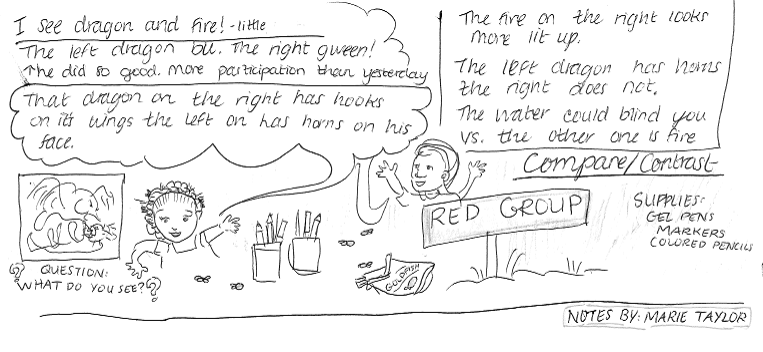Training on a new teaching method that uses art to develop children’s visual learning abilities will be offered to USD 383 elementary teachers thanks to a grant from a local foundation to Kansas State University’s Marianna Kistler Beach Museum of Art.
The museum has received a $10,000 grant from the Caroline Peine Charitable Foundation to help fund teacher training in the use of Visual Thinking Strategies curriculum materials, mentoring support for participating teachers during the 2015-2016 school year, and field trips and busing for students of participating teachers.
The Visual Thinking Strategies program is a multiyear image curriculum for students from kindergarten through the 8th grade that was developed by Abigail Housen, a cognitive psychologist, and Philip Yenawine, an art educator. With training, teachers learn to facilitate their students’ discussions of art images to help them develop critical thinking, communication and visual literacy skills. Students can transfer these skills to other subject areas, including English language arts, social studies, science and math. The Visual Thinking Strategies, or VTS, curriculum has been developed and tested internationally by Visual Understanding in Education, and was published for use in American schools in 2000.
Interest by USD 383 teachers and administrators in the program sparked a pilot project in December 2013 that included introductory sessions for teachers and classroom demonstrations.
“VTS engages learners in a rigorous process of examination and evidence gathering through discussions,” said Lucas Shivers, USD 383 director of elementary education. “The instructional practice measurably increases observation skills, evidential reasoning and speculative abilities. We hope educators will use strategic facilitated discussion to enable students to practice respectful, democratic, collaborative problem-solving skills that, over time, transfer to other classroom and life interactions.”
With the grant, a training workshop for interested USD 383 teachers will be offered June 4-5 by the national Visual Thinking Strategies office. Beach Museum of Art education staff will then mentor participants as they provide monthly VTS sessions to their students. Participating teachers receive a small honorarium and the training workshop qualifies for professional development hours. Museum and school officials hope the teachers will become program mentors for future participants as well.
“We are very excited about this teacher-driven partnership,” said Kathrine Schlageck, Beach Museum of Art senior educator. “VTS fits well with Kansas College and Career Readiness Standards, develops 21st century super skills, and students really enjoy the process. We look forward to helping teachers learn VTS and become adept at helping their students transfer new skills to other disciplines like science and math.”
Artworks used in the program are carefully chosen to highlight cultural diversity and understanding.
Additional support for the Visual Thinking Strategies project has been provided by David and Mindy Weaver, Charles and Sandy Bussing, the Patricia Conderman Education Endowment Fund, the van Swaay Family Foundation and the Manhattan-Ogden Public Schools Foundation.




